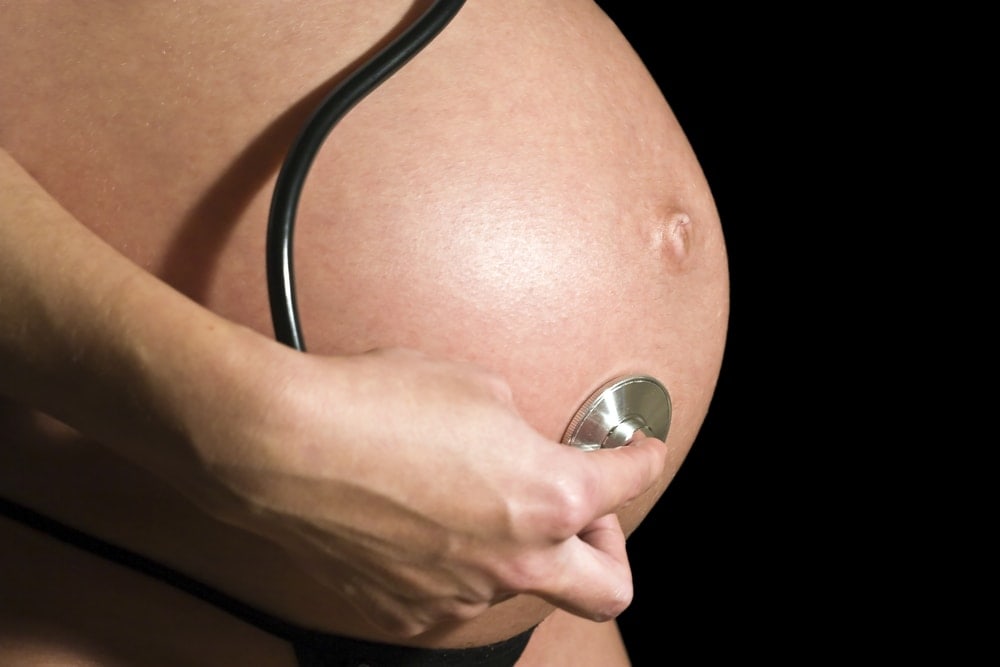As with any surgical procedure, there are risks of C-Section complications. It is important to know and understand your risks before having a cesarean procedure. A good understanding will help you in your discussions with your health care provider and help you make informed decisions.
C-Section Complications for Mother & Baby
A cesarean birth, occurs through an incision in the abdominal wall and uterus rather than through the vagina. There has been a gradual increase in cesarean births over the past 30 years. In November of 2005, the Centers for Disease Control and Prevention (CDC) reported the national cesarean birth rate was the highest ever at 29.1%, which is over a quarter of all deliveries.
This means that more than 1 in 4 women are likely to experience a cesarean delivery.
Cesarean Complications and Risks for Mother
Take into account that most of the following risks are associated with any type of abdominal surgery.
- Infection: Infection can occur at the incision site, in the uterus and in other pelvic organs such as the bladder.
- Hemorrhage or increased blood loss: There is more blood loss in a cesarean delivery than with a vaginal delivery. This can lead to anemia or a blood transfusion (1 to 6 women per 100 require a blood transfusion1).
- Injury to organs: Possible injury to organs such as the bowel or bladder (2 per 1002).
- Adhesions: Scar tissue may form inside the pelvic region causing blockage and pain. Adhesions can also lead to future pregnancy complications such as placenta previa or placental abruption3.
- Extended hospital stay: After a cesarean, the normal stay in the hospital is 3-5 days after birth, if there are no complications.
- Extended recovery time: The amount of time needed for recovery after a cesarean can range from weeks to months. Extended recovery can have an impact on bonding time with your baby (1 in 14 reports incisional pain six months or more after surgery4).
- Reactions to medications: There can be a negative reaction to the anesthesia given during a cesarean or negative reaction to pain medication given after the procedure.
- Risk of additional surgeries: Includes possible hysterectomy, bladder repair or another cesarean.
- Maternal mortality: The maternal mortality rate for a cesarean is higher than with a vaginal birth.
- Emotional reactions: Some women who have had a cesarean report feeling negative about their birth experience and may have trouble with initial bonding with their baby5.
Risks and Complications for the Baby
- Premature birth: If gestational age was not calculated correctly, a baby delivered by cesarean could be delivered too early and have low birth weight6.
- Breathing problems: When delivered by cesarean, a baby is more likely to have breathing and respiratory problems. Some studies show the existence of a greater need for assistance with breathing and immediate care after a cesarean than with a vaginal delivery7.
- Low APGAR scores: Low APGAR scores can be the result of anesthesia, fetal distress before the delivery or lack of stimulation during delivery (Vaginal birth provides natural stimulation to the baby while in the birth canal). Babies born by cesarean are 50% more likely to have lower APGAR scores than those born vaginally8.
- Fetal injury: Very rarely, the baby may be nicked or cut during the incision (on average, 1 or 2 babies per 100 will be cut during the surgery9).
If your health care provider has suggested a cesarean and you are in a non-emergency situation, take time to thoroughly discuss your options regarding the procedure.
- Find out why a cesarean procedure has been recommended in your situation.
- Ask for any alternatives that might be an option in your particular situation.
- Have your health care provider do a comparison of all the possible risks and complications for you and your baby for a cesarean versus a regular birth.
- Get information regarding the standard procedures after a cesarean (i.e., when you can hold your baby if the newborn evaluation can be done with the baby on your chest, how soon you can try to breastfeed, whether you will be given medication that will make you drowsy after the delivery).
Want to Know More?
Compiled using the following sources:
Shearer El. Cesarean section: medical benefits and costs. Soc Sci Med 1993;37(10): 1223-31.
Lydon-Rochelle M et al. First birth cesarean and placental abruption or previa at second birth. Obstet Gynecol 2000;97 (5 Pt 1):765-9.
Declercq ER, Sakala C, Corry MP. Listening to Mothers: Report of the First National U.S. Survey of Women’s Childbearing Experiences. New York: Maternity Center Association, Oct 2002.
ACOG. Evaluation of Cesarean Delivery. Washington, DC: ACOG, 2000.
Annibale DJ et al. Comparative neonatal morbidity of abdominal and vaginal deliveries after uncomplicated pregnancies. Arch Pediatr Adolesc Med 1995;149(8):862-7.
Van Ham MA, van Dongen PW, Mulder J. Maternal consequences of cesarean section. A retrospective study of intraoperative and postoperative maternal complications of cesarean during a 10-year period. Eur J Obstet Gynecol Reprod Biol 1997; 74 (1): 1-6.






